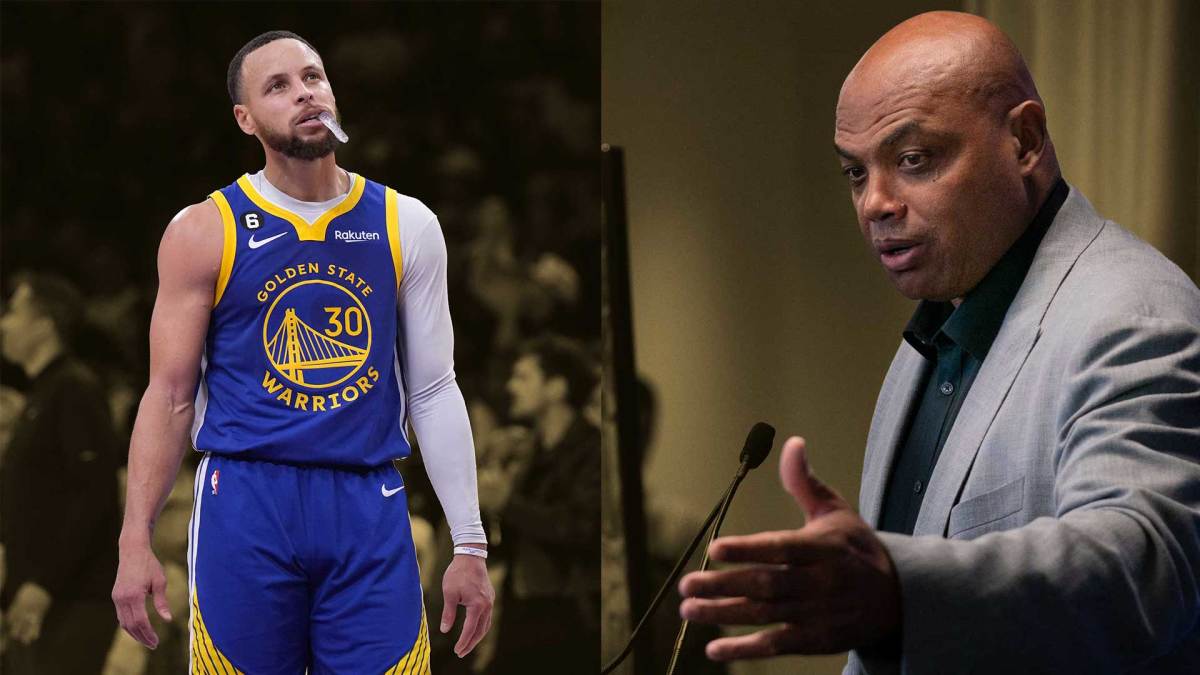Comparing eras has long been a staple pastime for NBA fans, particularly when the debate centers on which players or teams could have dominated across multiple decades. One such question revolves around whether the Golden State Warriors — and their franchise cornerstone, Stephen Curry — would have thrived in the 1970s or ’80s.
Few voices carry more weight in that discussion than Charles Barkley’s. A Hall of Famer who has both played and covered the league across multiple eras, Barkley addressed the question head-on in his trademark blunt style while hopping on “The Dan Patrick Show” in July 2022.
Advertisement
NBA then and now
To understand Barkley’s perspective, it is necessary to examine how the NBA’s game and culture have evolved from the past to the present.
The 1970s and ’80s were an era of punishing defense and methodical half-court basketball, where nearly every possession was a brawl under the rim. Today’s NBA — reshaped and perfected by four-time champion and two-time MVP Curry — is built on tempo, spacing and the long ball. Many around the league point out that the modern game is noticeably less bruising, with some even saying it’s gotten “soft.”
Advertisement
That said, there’s a strong case Curry would have thrived back then, too. His deep shooting range could have pulled defenders out of the lane, creating valuable space to exploit. Add in Steph’s ability to hit shots under pressure, his tight ball-handling and his knack for driving or setting up teammates and you can easily picture the 11-time All-Star being a major headache for defenders of that past era.
Still, Barkley, who became one of the best forwards ever during his time in the league from 1984 to 2000, wasn’t so sure.
Speaking with Patrick, he first praised the Warriors‘ style, which perfectly matches the aforementioned traits of the modern game. However, he then insisted that Curry and most of his Golden State teammates at the time, like Draymond Green, Klay Thompson, Jordan Poole or Andrew Wiggins, could not have endured the old-school grind, citing their inability to show the physical resistance required.
Advertisement
“Listen, the Warriors — I love what they do, but those little bodies they got, they wouldn’t last in the ’70s or the ’80s,” Barkley said.
The Pistons defined brutal ’80s basketball
When discussing pure old-school toughness, few teams capture that era as vividly as the Detroit Pistons of the late 1980s and early 1990s. Known as the “Bad Boys,” they forged their reputation through a style of basketball defined by contact, confrontation, and relentless physicality, often testing the boundaries of the rulebook. Sometimes, they didn’t just push the line; they crossed it.
Advertisement
As Barkley said, that infamous side — NBA champions in 1989 and 1990 — weren’t just competing hard; they were trying to hurt people.
To illustrate just how tough the Bad Boys were, Barkley even half-jokingly recounted that every time players faced them, they’d call their families and say, “I love you” — just in case they didn’t make it back from the war, Detroit’s roster, spearheaded by Bill Laimbeer, Isiah Thomas, Joe Dumars and Dennis Rodman, brought to the floor.
If Barkley — a 6’6″, 252-pound force of nature — approached those games against the Pistons with that much caution, it’s fair to wonder how Curry, once dismissed as undersized early in his storied career, would have held up.
Advertisement
Probably not too well, Barkley suggested, pointing to another superstar who, despite being perhaps the greatest basketball player of all time, once struggled against the Bad Boy Pistons: the legendary Michael Jordan.
Jordan and Thomas mastered the old grind
To contain Jordan, Detroit head coach Chuck Daly famously implemented the “Jordan Rules,” a relentless mix of aggressive tactics unlike anything the NBA had seen before or since.
Jordan, a 6’6″ swingman, often struggled against Detroit’s physicality, with the Pistons repeatedly proving to be the ceiling of his early postseason career — before he and the Chicago Bulls eventually overcame that very challenge.
Advertisement
That history reinforced Barkley’s point that a smaller, less physical player like Curry would have faced an impossible test, stressing that the Warriors star could not have withstood the kind of beating Jordan endured. Instead, Steph, as Chuck explained, would have been limited in showcasing the brilliance he has displayed night after night for the past decade.
For Barkley, the explanation was fairly simple. It wasn’t that he doubted Curry’s skill, but the game back then was simply tougher. The 1993 Most Valuable Player with the Phoenix Suns acknowledged that critics making similar points sometimes sound like old men shouting, “get off my lawn,” yet he made his case clearly while still giving Curry and the Dubs their due for the way they have excelled in the modern era.
Even when Patrick tried to push back by pointing to Isiah Thomas — 6’1″ and roughly 180 pounds, a build much closer to Curry’s — Barkley didn’t flinch.
Advertisement
He explained that Thomas was unquestionably one of the toughest players ever to step on an NBA court, enduring hits and punishment that would have overwhelmed most, including being struck in the face by legendary big man Karl Malone during the early 1991-92 season and still continuing to perform at an elite level.
Barkley further emphasized that Thomas’ game was built for that era and no matter how skilled, Curry’s frame and style of play would have left him exposed to the same physical challenges.
This story was originally reported by Basketball Network on Oct 26, 2025, where it first appeared in the Old School section. Add Basketball Network as a Preferred Source by clicking here.

